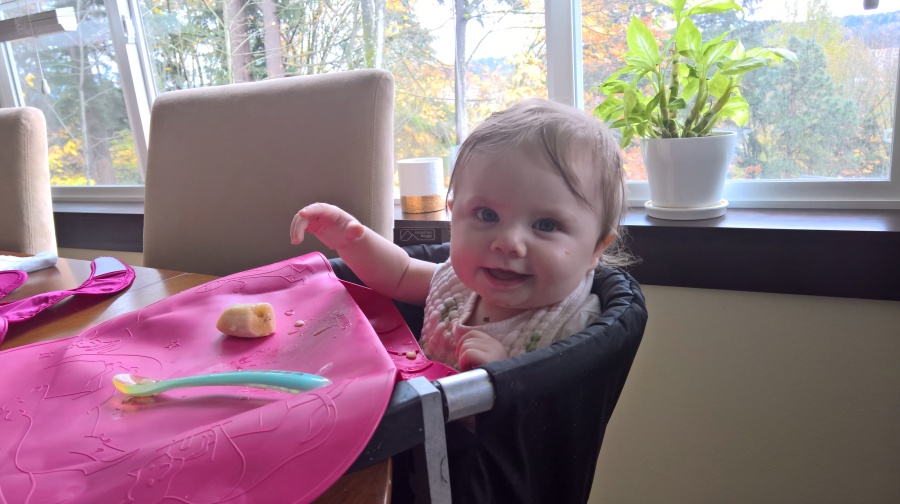 Today marks the one year anniversary of Lillian’s tube wean. And what an amazing year it has been! The days since Lilly’s wean have been as filled with light and happiness as the days before her wean were filled with darkness and struggle. The wean switched on a light in our lives, freeing Lilly from her suffering, and allowing her to be the happy, carefree little girl she was always meant to be.
Today marks the one year anniversary of Lillian’s tube wean. And what an amazing year it has been! The days since Lilly’s wean have been as filled with light and happiness as the days before her wean were filled with darkness and struggle. The wean switched on a light in our lives, freeing Lilly from her suffering, and allowing her to be the happy, carefree little girl she was always meant to be.
She loves eating–cherry tomatoes, Zing bars, cheese, and Homegrown sandwiches are some of her favorite foods. A couple weeks ago, she stopped accepting broken off pieces of Dave and my sandwiches during our weekly trips to Homegrown and now demands her own sandwich which she insists on eating like we do (pictured above). Today when I got home from work, she asked for an avocado and proceed to eat the whole thing except a couple slices that she shared with me (and one she squished because that’s just fun), and then did the same with a whole peach.
Lillian has also enjoyed her bottles of milk this past year, but is going through another wean on that front. I stopped pumping a few months ago and we have rapidly gone through our supply of frozen milk. She has rejected any mama’s milk substitutes other than water, so she’s begrudgingly accepting tapered off access to milk (a couple ounces before nap and bed), which will come to an end in a week or two. But as a result, her appetite and enthusiasm for solid food has increased dramatically, and she seems to have actually gained a little weight (according to the mama carry test) as her milk volume has decreased. Like the other weans we’ve been though, this one has been tough on her at times but she’s adapting well.
Overall Lillian has been in superb health this past year. She’s almost never sick, and while she was a little behind on gross motor skills because of the tube feeding and reflux, she has caught up there and is ahead of the curve on all other developmental milestones (her vocabulary is amazing–especially the number of foods she can ask for by name!).
Lillian is still a small little thing–at 17 months she hasn’t yet reached 20 lbs. But more or less, she’s held her growth curves (slipping at times and then either maintaining or regaining ground). Because of that, and how well she’s doing on her milestones and health indicators, her doctor isn’t worried in the least, and we’ve been off the emotional pressure cooker of failure to thrive watch for some time now. I have a couple theories about why she’s so small–1) that the worst of her tube feeding/weight gain struggles happened during those formative first few months when babies usually pack on the pounds, 2) that she may have genetically high metabolism (in his twenties, my husband was one of those legendary people who could eat whole pizzas and a bakers dozen tacos and still be skin and bones), 3) that she eats less junk food than the average kids on the charts who determine those averages (pretty much no junk food at all in fact–she just doesn’t care for it on the rare occasions it’s offered to her). But those are just theories, and we’ll never know what would have been if she had a different history. So, I look for slim cut toddler clothes, and do my best not to stress about it. With a kiddo as joyful and precocious as Lilly to hug and kiss every day, she makes it easy to leave those old worries behind and focus on the positive:) Read more







